What is an email template?
An email template is a reusable and customizable pre-designed layout for emails that includes placeholders for different design elements, texts and widgets, so you don’t have to start from scratch every time you need to create an email.
Templates are particularly useful because they save time and maintain brand consistency, especially in businesses where similar kinds of emails are sent repeatedly, like newsletters, feedback emails and so on.

How to create an email template
To create an effective email template manually, you should start by outlining the essential elements you want to include. Then, you can use HTML to build the structure and CSS to style each component for a clean, professional design. However, if you're not familiar with coding, a HTML email builder can simplify the process, allowing you to create email templates without the need for extensive technical knowledge.
Luckily, you can use an ESP like Mailmodo to streamline this process. Mailmodo allows you to design your email template using its easy-to-use drag-and-drop email editor.
Here are the steps you need to follow to create an email template:
Step 1: Define the purpose of your email
The first step to creating any email template is understanding the purpose of the email. Are you informing or engaging your audience or promoting a product or service? A clear objective guides your layout, content, and design choices, setting a focused direction for the rest of the template.
Step 2: Design the template
To design the email template, you need to log in to Mailmodo and then follow the steps below:
- Select the “Templates” tab in the sidebar, then click on “Create new template” in the top-right corner.
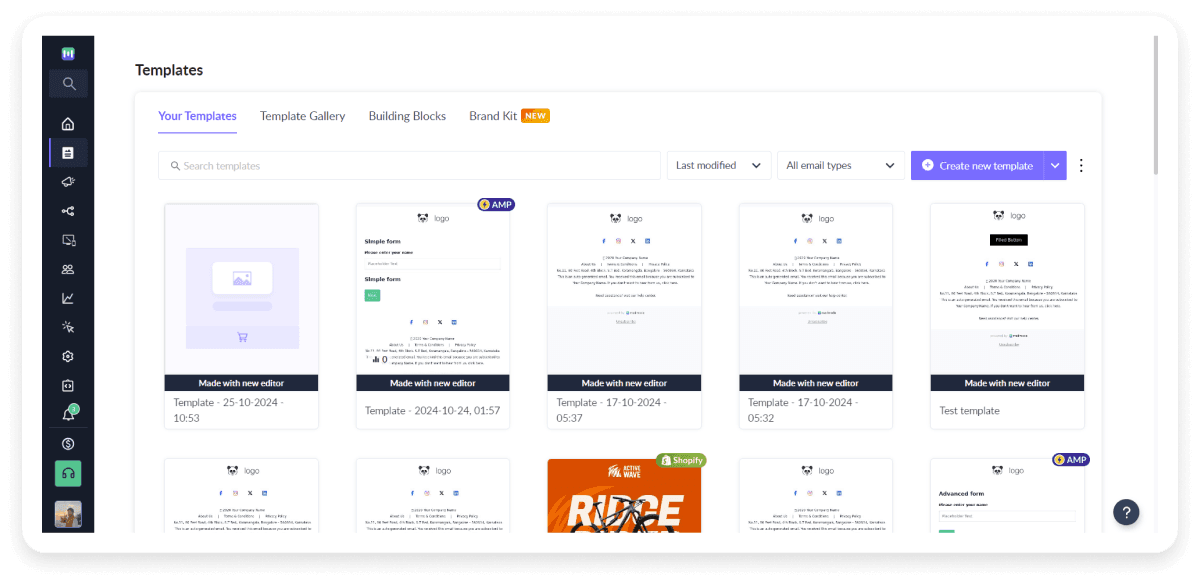
- Choose between starting with a blank template or using a pre-designed layout.
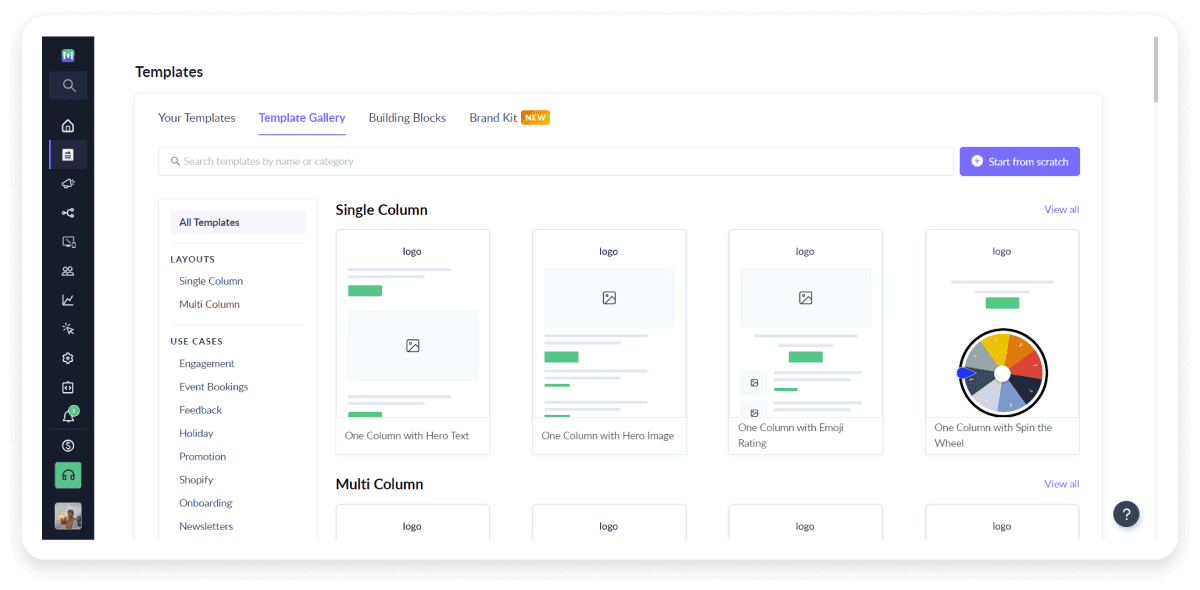
- Use the drag-and-drop editor to place your layout elements like text, images, buttons, and dividers in your preferred arrangement. Each element is customizable to suit your campaign's branding, making it simple to match your visual standards.
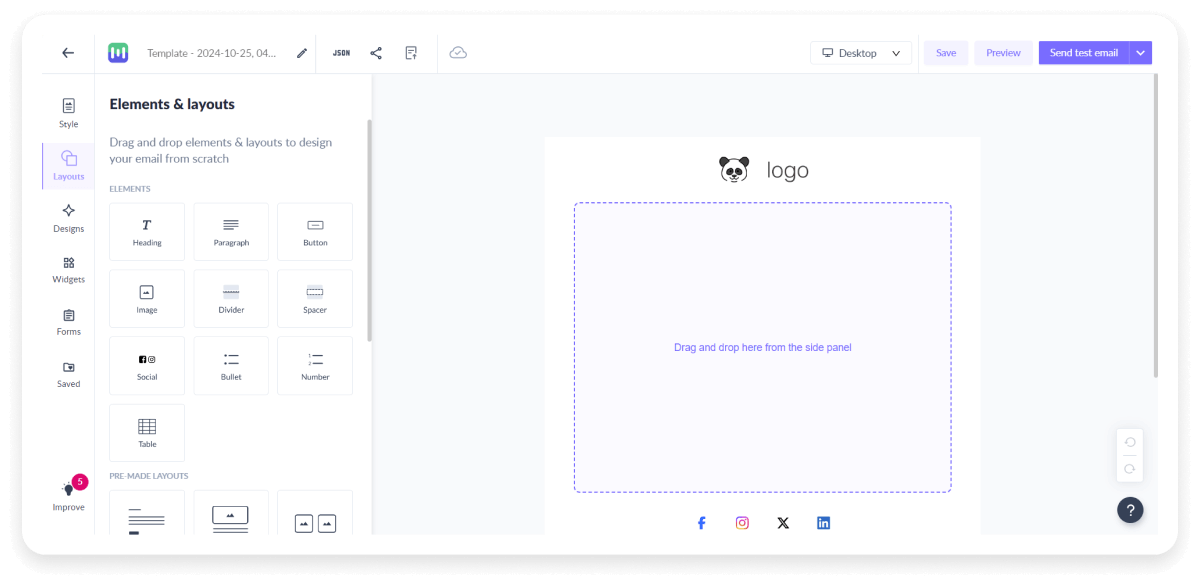
Step 3: Define the content
With your layout set, add in the content and visuals:
- Content: Focus on clear, concise language that aligns with your purpose and your brand voice, using personalization options to increase engagement.
- Visuals: Use Mailmodo’s editor to integrate brand identity and elements such as your logo, and add engaging visuals like images, carousels or icons that enhance readability.
- Widgets: You can also include interactive widgets and forms to make your email template more engaging.

Step 4: Test and refine
Testing is a crucial final step to check if the template is fully optimized and renders properly.
- Use the Preview button to get a quick look at your template across different devices.
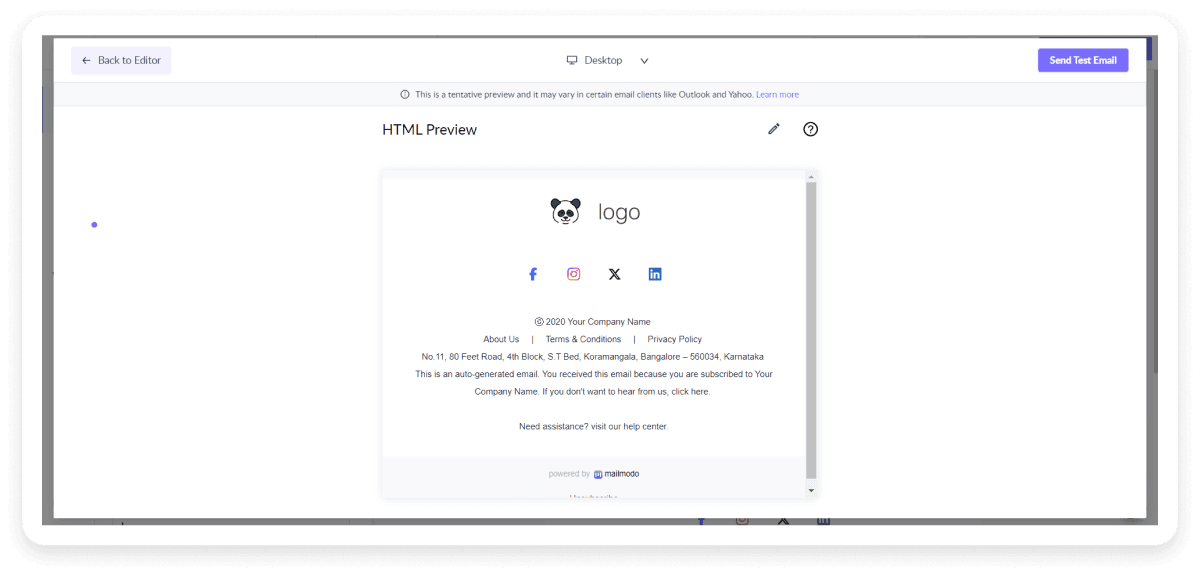
- Send a test email to see exactly how it appears in your inbox. If you’ve included AMP elements, you’ll receive both AMP and fallback HTML versions.
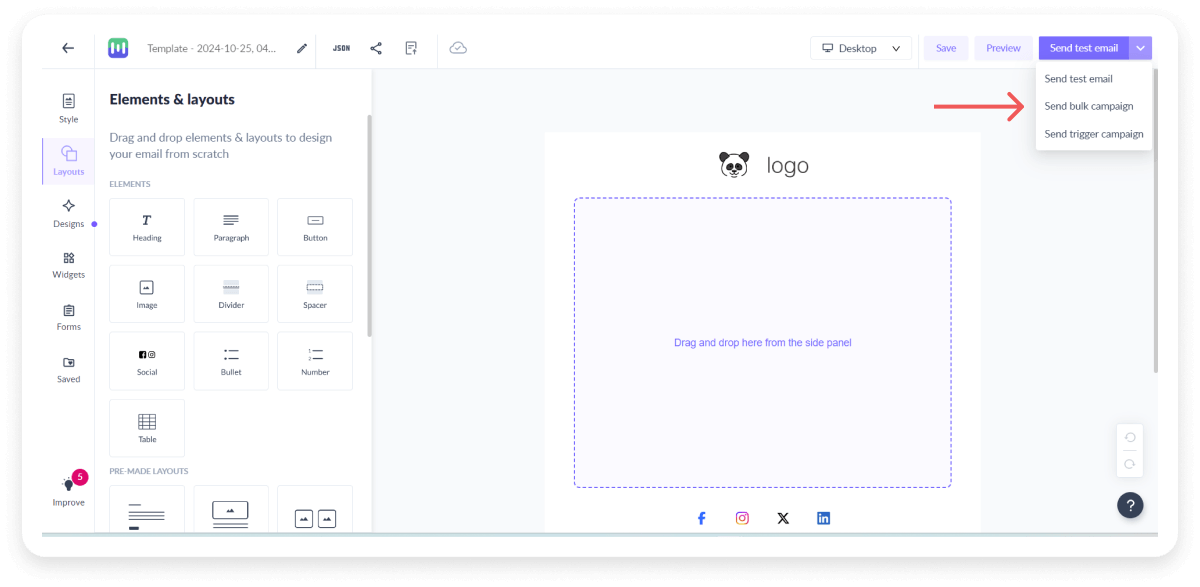
💡 Related guide: 11 Must-Know Mobile Email Design Tips to Keep Your Subscribers Happy
Design an email template today
Best practices to follow when creating an email template
While the drag-and-drop editor from Mailmodo can help you get rid of the technicalities, you still need to focus on certain aspects to ensure that your email template is perfect. Here are some tips you should keep in mind while creating your email template.
- Use responsive design: Ensure your email adapts seamlessly across devices to maintain readability on all screen sizes.
- Maintain clear structure: Organize content with headers, subheadings, and whitespace to make the layout easy to follow.
- Craft a strong CTA: Keep call-to-action buttons prominent and aligned with brand colors. Consider using concise and action-oriented text.
- Write catchy copy: Create engaging, concise messages and headlines that capture attention right away.
- Balance text and images: Avoid using too many images to keep load times fast and improve deliverability.
- Optimize image size: Compress images to enhance load speed without losing visual quality.
- Incorporate brand elements: Use brand colors and logos consistently to reinforce brand recognition and maintain a professional look.
- Ensure accessibility: Use web-safe fonts, add alt text for images, and ensure good color contrast to support readability and accessibility.
💡 Related guide: The Only Email Design Guide That You Need to Read
Conclusion
In conclusion, creating an effective email template is important for successful communication with your audience and providing them with an engaging experience. By following the steps outlined in this guide, you can develop email templates that are both visually appealing and functional. With a thoughtful approach to your email design, you'll foster stronger connections with your audience and enhance the overall impact of your marketing efforts. Also, keep in mind the best practices we’ve discussed……


















